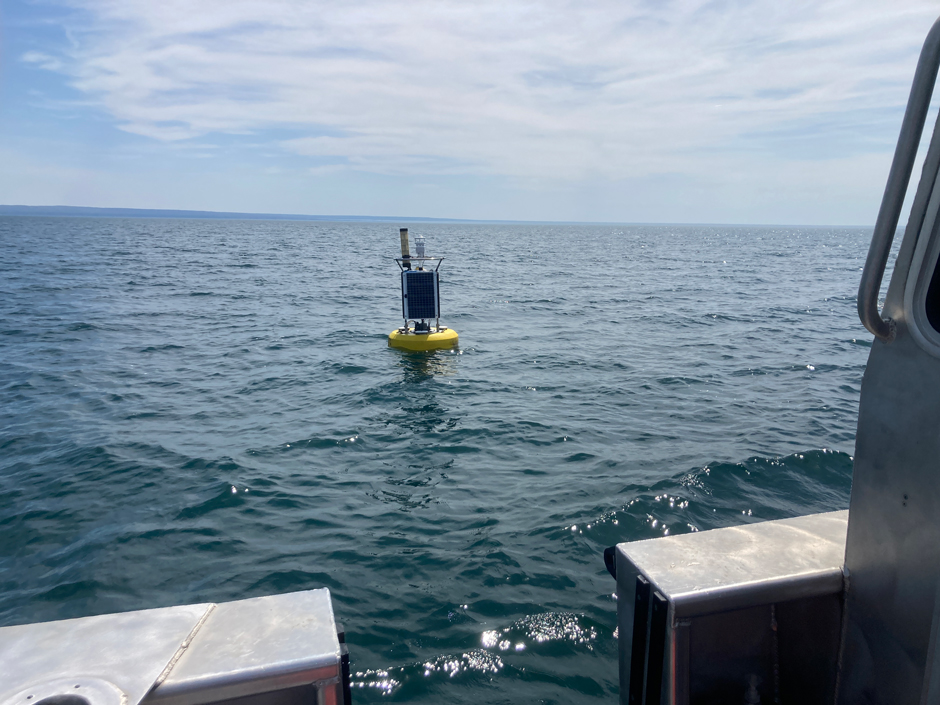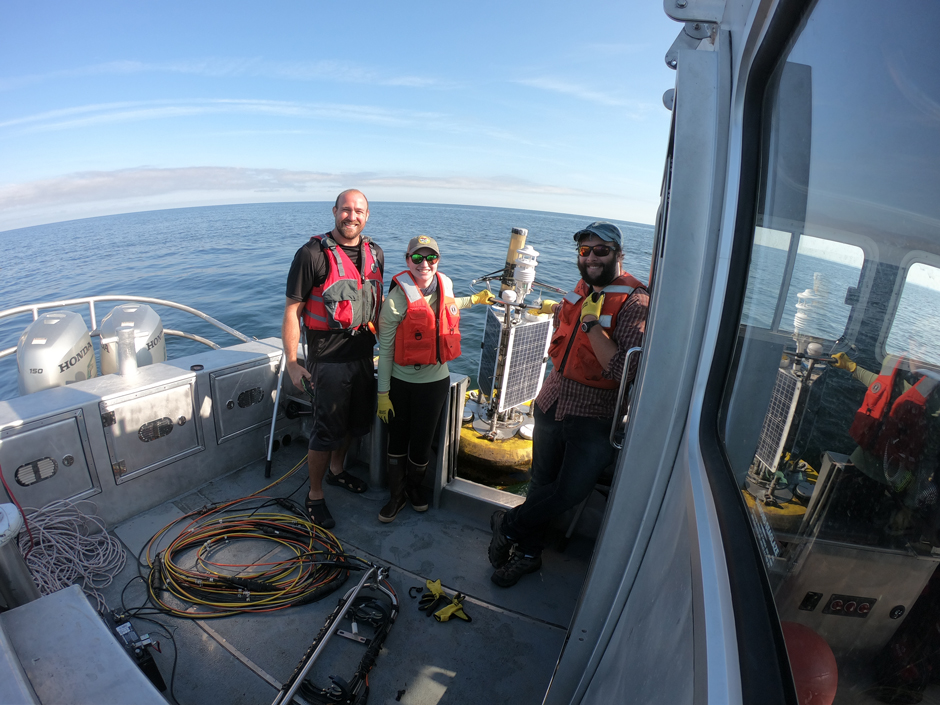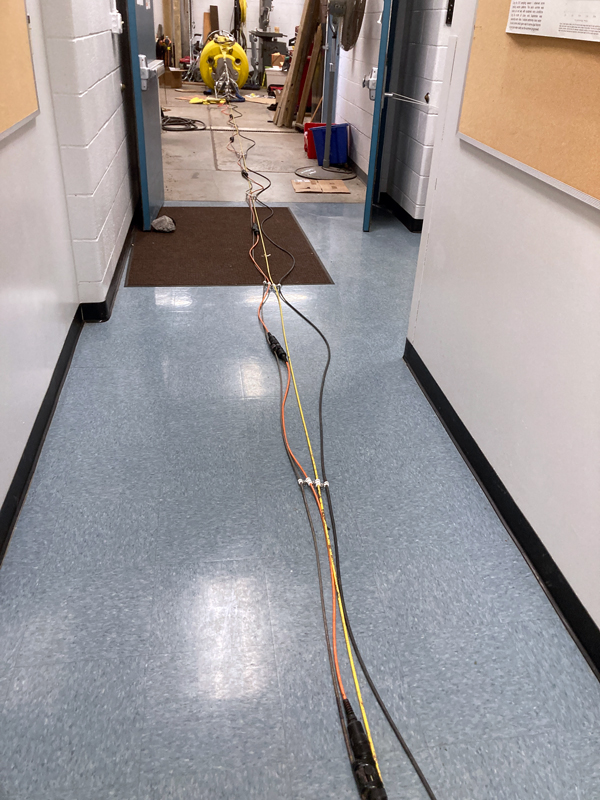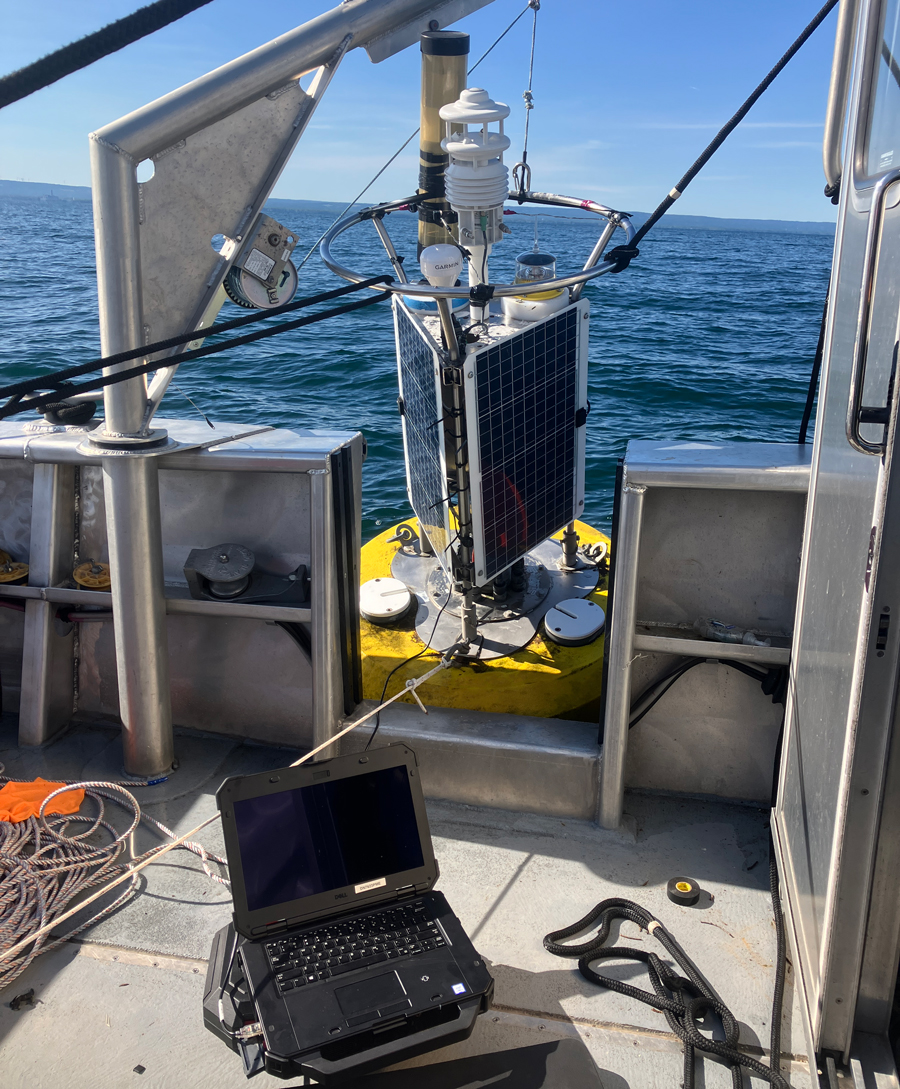In the eastern basin of Lake Erie, off the coast of Dunkirk, New York, a data buoy collects valuable water quality, weather, and wave data that inform residents and regulatory groups of conditions on the water.
Since 2011, Buffalo State University’s Great Lakes Center has maintained and operated the Dunkirk buoy with funding from the Great Lakes Observing System (GLOS) and field support from the NYSDEC Lake Erie Fisheries Research Unit.

The Dunkirk Buoy viewed from the research vessel after being deployed in early spring. (Credit: Brian Haas / Buffalo State University)
The Significance of a Data Buoy in Lake Erie’s Eastern Basin
The Great Lakes Center buoy is one of the only real-time monitoring systems of this scale in the eastern basin, making the data collected here vital for building GLOS’s network. Both historical and real-time data serve important roles in modeling and understanding Lake Erie.
The NexSens CB-650 is equipped with a wave sensor, Lufft WS502 Weather Station, T-Node temperature string, and YSI EXO2 sonde. The top-side wave sensor records wave height and wave period, and the Lufft WS502 measures air temperature, humidity, pressure, solar radiation, and wind.
Below the surface, the T-Node temperature string measures water temperature at 2m intervals starting at 2m down to 25m. At the 25m mark, a YSI EXO2 measures dissolved oxygen and conductivity.
Brian Haas, a field and lab technician at the Center, oversees all buoy operations and ensures that data is consistently available online via the Seagull portal.
Being one of the only systems with a temperature string in the eastern basin, the buoy provides additional insights into how the Lake stratifies. With stratification, there is the potential for hypoxia, so the combination of the EXO2 and temperature string helps document both events.


Brian Haas, Emily Klimczak, and Ben Szczygiel retrieving the CB-650 buoy in early fall and preparing to tow it back to shore. (Credit: Brian Haas / Buffalo State University)
Lake Erie is also prone to experiencing seiches—characterized by NOAA as strong winds and rapid changes in atmospheric pressure that push water from one end of a body of water to the other. These seiches can trigger storm surges and lead to water levels rising an additional 10 feet and a unique phenomenon of cold pockets of water being pushed into warmer portions of the water column.
“You can see some interesting observations looking at the data from the temperature string and the EXO2 during seiche events. You can see all of those changes happening in real time,” explains Haas.
For the general public, the buoy provides critical data that allows recreational and commercial boaters to check the windspeed, wave height, and water temperature out on the Lake to help them make safe boating decisions. Additionally, the NYSDEC Lake Erie Fisheries Research Unit uses the data to help plan fieldwork operations.
Haas adds, “Charter captains also make use of the temperature string which shows them the different temperatures in the water column and can help them decide what depths to fish at.”


The buoy’s temperature string spread out to perform winter maintenance in preparation for spring deployment. (Credit: Brian Haas / Buffalo State University)
Conclusion
Haas joined the Great Lakes Center in 2017 and has worked on a variety of research projects over the years, but the buoy project has always been one of his favorite parts of the job.
“[The buoy] provides a useful service to a diverse group of people. It is always rewarding to hear from individuals who use the data from the buoy and are very appreciative of the work we do. Many anglers launch out of Dunkirk and often express how useful the buoy is to them and thank us for continuing to operate it,” states Haas.
He continues, “Sometimes in science, the data is only really being used by researchers, but this buoy is used by everyday people in all sorts of different communities for a variety of reasons. That’s my favorite aspect of it—it, serves as a really important and useful public resource.”


The Great Lakes Center buoy is winched up and secured to the research vessel so that it can be connected to a laptop on board. (Credit: Brian Haas / Buffalo State University)







Leave a Comment